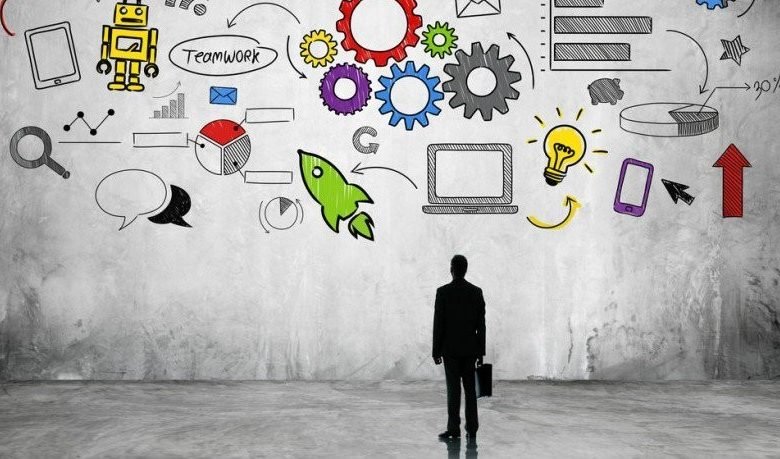
By | Rajiv Jayaraman | Founder-CEO, KNOLSKAPE ; Author: Clearing the Digital BLUR, TEDx speaker, Chief People Officer, Talent Transformation
If we were to go with a mathematical approach to explain business outcomes, the following formula can serve as a good anchor.
Learning and Development (L&D) teams in organizations play a crucial role in all the three pillars, viz. Strategy, Capability and Culture to achieve business outcomes.
They do so by:
- Driving clarity, alignment and purpose by cascading the strategy through various levels of the organization
- Building competencies that are aligned to the strategy of the organization for seamless execution
- Energizing the organization through strong leadership pipeline and culture
There are, however, some important transformations that the L&D teams have to go through in the context of modern workplaces.
Here are the Top 7 transformations:
1.Creation to Curation
L&D teams do not have monopoly over content anymore. Learners have direct access to great content at their finger tips.
Few years ago, when structured content was still hard to come by and access to good quality information was still a challenge, L&D teams played the role of content creators. But today, with the explosion of great quality online content from top-tier providers, that too mostly offered for free, the role of the L&D team has to change.
Content creation is not valuable anymore from an L&D team’s perspective. In this age of abundance and I might add, clutter, curation becomes very crucial. Building the right context for learning is equally, if not more important, than content in today’s scenario.
2. Compliance to Commitment
In most organizations, the ownership for learning rests with the L&D team. Learners feel that they are pushed to attend learning interventions and the results turn out to be sub-optimal. To truly become a learning organization, the organization should encourage individuals to take accountability of their own learning. The key role of the L&D team is then to promote learning, not through a compliance process, rather by creating a culture of learning and boosting individual and leadership commitment.
3. Building better learning systems to building better learners
Many L&D teams spend a lot of time building learning systems, mainly driven through learning management systems. Once the systems are in place, they work tirelessly to drive adoption of these systems. This approach needs to change. Instead of focusing on building monolithic systems, L&D teams should focus on building better learners. This happens when the L&D team uses principles of human centered design to truly understand the motivation of modern day learners and use that as the starting point. In short, the thinking has to move from provider centric approach to learner centric approach.
4. One size fits all to hyper-personalization
For the longest time, many functions within organizations have used the one-size-fits-all approach to drive standardization and scale. L&D teams are no exceptions. In today’s business scenario, one size actually fits none. From one to many broadcast models, we are moving towards a “n=1” hyper-personalization model. This is akin to the way Google or Amazon curates the experience of their customers.
To meet with the fast changing needs of the business, learning has to be agile, dynamic and more importantly, intensely personal. What design thinking as a concept might mean to a marketing professional may not mean the same thing for an HR professional. Furthermore, the concept has to be calibrated from the learner’s experience and prior understanding.
4. Single Channel to Omnichannel
Many L&D teams think of the classroom as the main place where learning happens. In reality, this is quite untrue. Bulk of the learning actually happens on the job. In fact, if you think about it, learning happens all the time and everywhere. L&D teams have to break the tyranny of space and time to offer learning options to learners anytime, anywhere in an omnichannel fashion.
5. From gut feel to learning analytics
There’s a classic case study on Netflix and its approach to creating the mega hit show, “House of Cards”. Netflix used big data analytics to figure out the winning recipe for the show. L&D teams can pull a leaf out of the Netflix strategy to come up with innovative approaches for designing new learning experiences. Learning and HR analytics can play a huge role in this process.
6. From “1E” to “5E”
Traditionally, L&D teams have been working with single minded focus on one E: Education. Educating employees has been the main charter over many years. Today, education is only a small part of the equation. We need to start looking at the 5Es: Education, Experience, Exposure, Enablement and Evidence.
7. Pedagogy to Neurogogy
The word pedagogy refers to the system of education used to teach kids. Today, this system is being unfortunately used to teach adults. There’s no surprise that the engagement levels in learning interventions are pretty abysmal. Some organizations use principles laid out by andragogy (adult learning principles) to drive deeper learning. While andragogy is a huge step in the right direction, it still does not factor in the advancements in neuroscience when it comes to making learning effective. In short, we need to move rapidly from pedagogy to neurogogy.
Finally, there is an important transformation that the L&D team needs to go through: The transformation of becoming agile learners themselves. L&D teams need to learn the business content, technology drivers, advancements in neuroscience, data analytics and human centered design to create great learners within the organization.
In the context of the modern workplace, learning is right at the core. As Peter Senge aptly says, “The only sustainable competitive advantage is an organization’s ability to learn faster than the competition.” The L&D team is uniquely placed as a key source of competitive advantage for an organization.They can play this role by ensuring that the strategy, capability and the culture of the organization are all aligned to achieving great business outcomes.
Republished with permission and originally published at Rajiv Jayaraman’s LinkedIn











